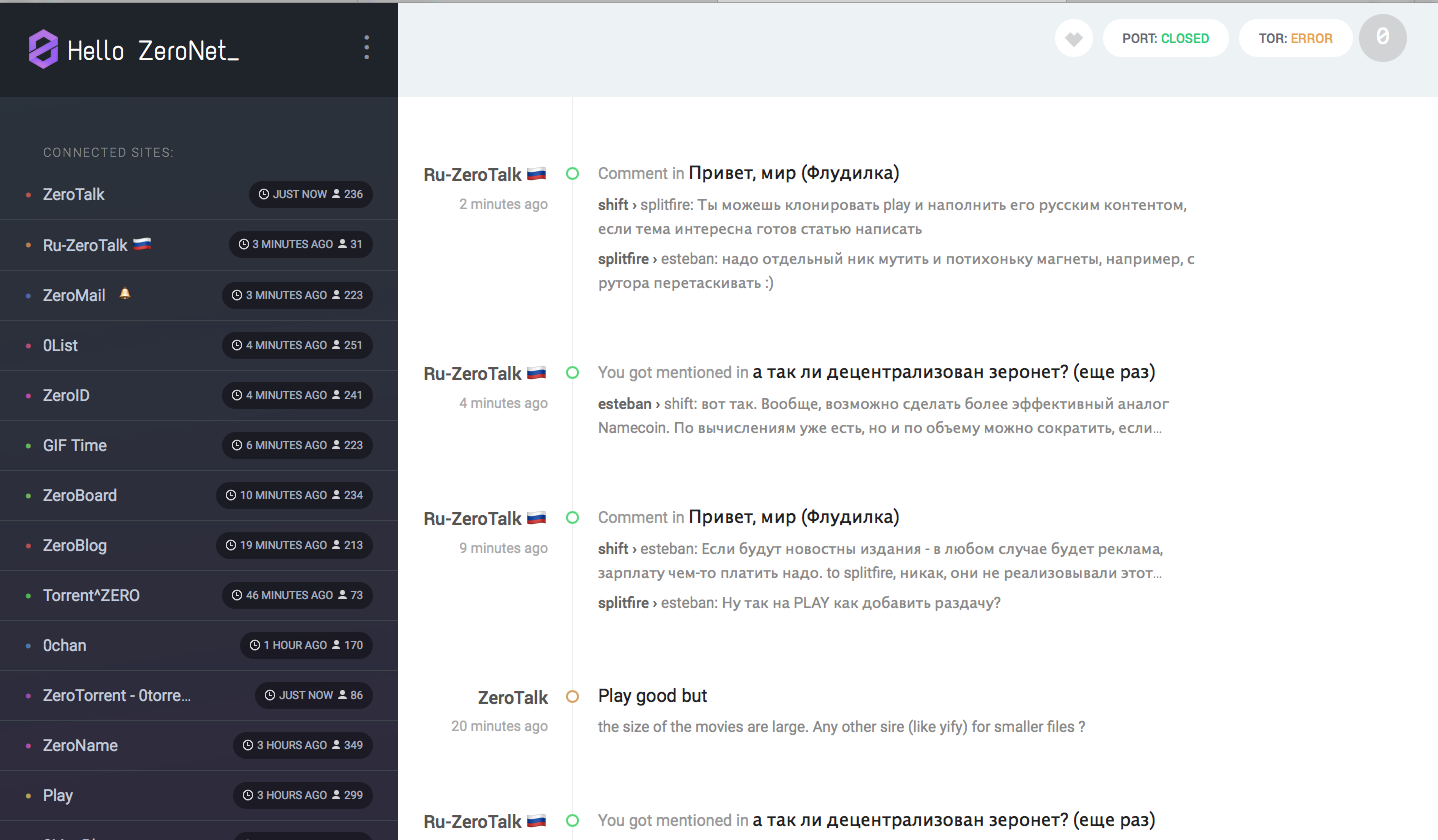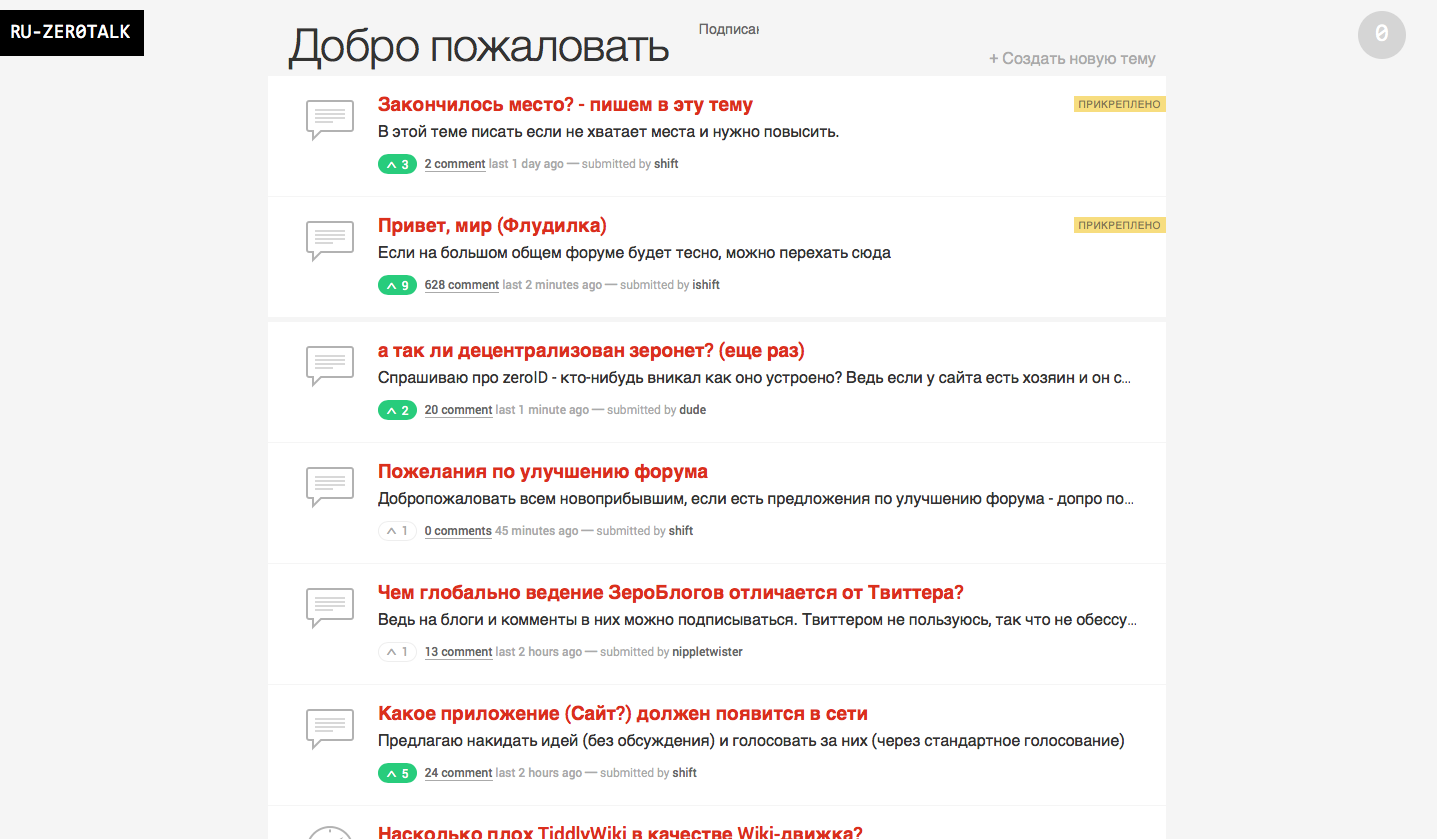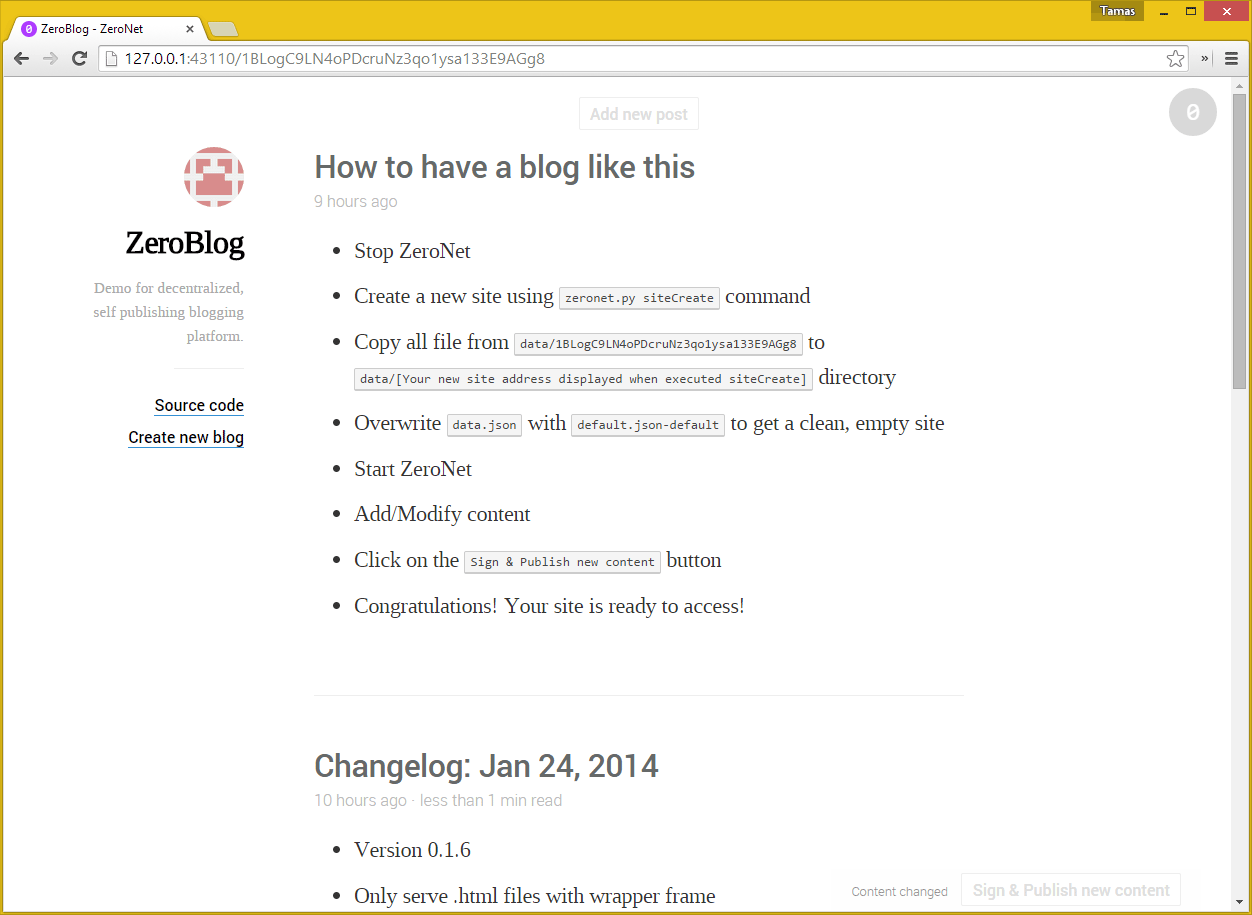ZeroNet - A truly distributed network - a year later

About a year ago I wrote about this network ZeroNet - Distributed sites via Bittorrent and Bitcoin were still then Hrr and in the comments there were discussions about how the network is distributed. Yes, a year ago there were really questions, but now everything has changed.
Inside:
- What is this your ZeroNet
- What has changed over the year
- Why it is useful in terms of protection against censoring
- Why is it useful as import substitution and “protection of sovereignty”
- What is online?
What is this your ZeroNet
ZeroNet is a distributed network, it works as follows: On your device, a Python server is launched that connects to the same user as you and listens to port 43110 at 127.0.0.1 where you need to log in with your browser.
')
Bittorrent Bitcoin and DHT technologies are used under the hood.

Russian forum in the network
A little more:
Each site in the network is a folder with the contents and the manifest file that is signed with your public key, only the owner of the private key has the ability to update the content in the future. (Not counting the sites with multi-signature below about them )
Connection to sites occurs as follows: You need to know its hash address or the .bit domain as soon as you try to open it (for example, http://127.0.0.1:43110/1HeLLo4uzjaLetFx6NH3PMwFP3qbRbTf3D ) you will connect to the torrent tracker and find peers that distribute this site, after which it will download. (Further work is planned through DHT, but at the moment - no)
And the content update?
The site owner can publish a new version of the site and if it is signed with a valid key - it will be distributed between the feasts.

Blogs in the network
What has changed over the year
And now about the main thing - what has changed in a year.
In the last post, people criticized the network for not distributing - indeed, a year ago such resources as a forum worked on the means of sending a get request to the server and the server had already updated the content for everyone else.
Now everything is different.
A site on the network can be multi-sig (i.e. be able to contain content from different private keys, i.e. different users)
To do this, the manifest to the site indicates that users with their own keys and not just the owner of the primary key can have an entry in a specific folder.
How does it look inside? - First, we need to get our signature, now ZeroID is being used - the resource fixes the correspondence of the nickname and key, by the way, no one bothers to clone it to make your own, but we will consider it.
After receiving the signature, you “Enter” by providing your signature, and when writing, say, a forum post, you sign the content with your signature and send it between peers with your signature.
Peers receive content and verify if you really sent the changes (based on ZeroID) and, if so, accept the changes.
For each site, you can configure your own restrictions and privileges, but this will not be discussed in this post.
Why it is useful from the point of view of protection against censorship / Why it is useful as an import substitution and “protection of sovereignty”
These two points are very strongly connected, as nb is strange. At the moment, the network has only 1 central part which will be eliminated soon - torrent tracker, in the near future (according to the developer) there will be a transition to the DHT network, which will allow to be independent from external threats. Moreover, these very threats can be both external and internal.
What is online?
If you decide to look at how the network works, then you should download the client, it is available on the official website zeronet.io
If the OS is different from windows, then you will need to clone the repository and run the script, for windows everything is easier, download, unzip and run.
Some network resources:
The same pirated Play due to which recently wrote about the network on many foreign resources http://127.0.0.1:43110 / 1PLAYgDQboKojowD3kwdb3CtWmWaokXvfp
ZeroTalk - a large forum http://127.0.0.1:43110 / Talk.ZeroNetwork.bit
Domestic Russian-speaking analogue of the large forum http://127.0.0.1:43110/1Apr5ba6u9Nz6eFASmFrefGvyBKkM76QgE
Network developer blog with changelog http://127.0.0.1:43110 / Blog.ZeroNetwork.bit
Imageboard http://127.0.0.1:43110/0chan.bit
A blog about the development in Russian http://127.0.0.1:43110/blog.gomzik.bit
PS In the last article, as a test, I created a test site on the network, and as it turns out, it still works ...
Source: https://habr.com/ru/post/278615/
All Articles